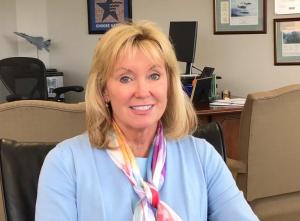Ten short videos
Steve Mitnick is Editor-in-Chief of Public Utilities Fortnightly and author of the book “Lines Down: How We Pay, Use, Value Grid Electricity Amid the Storm.”
PUF's Steve Mitnick spent the day at American Water, both its headquarters in New Jersey and a major water treatment plant nearby, on August 21. Check out these ten short videos of American Water CEO Susan Story, and New Jersey American Water's production manager Eric Hahn and operations specialist Jane Hanuszczyk. The full interview of Story and an extensive article on our day at American Water is found in the October issue of Public Utilities Fortnightly.

American Water CEO Susan Story: Technology is critically important, not just for the quality of water, but also the affordability and the ability to be more efficient.
American Water CEO Susan Story: We no longer have the traditional IT department. We have groups that are looking at how technology will transform how we do our business, how we deliver the clean, safe, affordable, and reliable water.
American Water CEO Susan Story: There are four major issues facing the water industry in the United States today. Water supply, water infrastructure, water quality, as well as customer connectedness.
New Jersey American Water's production manager Eric Hahn: We have wells on site, four filters, a ground storage tank, and then, high service pumps, which pump it to an elevated storage tank.
New Jersey American Water's production manager Eric Hahn: Now it's all done from the control room with the push of a button, or a timer, and it'll just automate, the valves start doing what they're supposed to do automatically.
New Jersey American Water's production manager Eric Hahn: This is associated with the southwest operating center, which is shown here in the orange and the gray. The orange is our service area. The gray are some of our bulk sale customers.
New Jersey American Water's production manager Eric Hahn: Each pump is a different flow rating, how much water he wants going out the door here.
Operations specialist Jane Hanuszczyk: This is where we can actually see what the water looks like after having gone through about 3/4 of the treatment process.
Operations specialist Jane Hanuszczyk: Even though our system demonstrated for a number of years, 1995, I believe, that we were optimized in our treatment process.
Operations specialist Jane Hanuszczyk: So this is the ferric chloride, this is one of the first pieces in what we call our treatment train. This is after the water has come in and then ozonated. Which is an oxidation process as well as disinfection. This begins what we call the coagulated process, where it kind of takes everything that's been broken up in the water and starts to kind of pull it all back together so that we can ultimately settle it out of the drinking water.



